How to Make Homemade Vegetable Stock or Broth
Easy, step-by-step instructions for how to make homemade vegetable stock or broth.
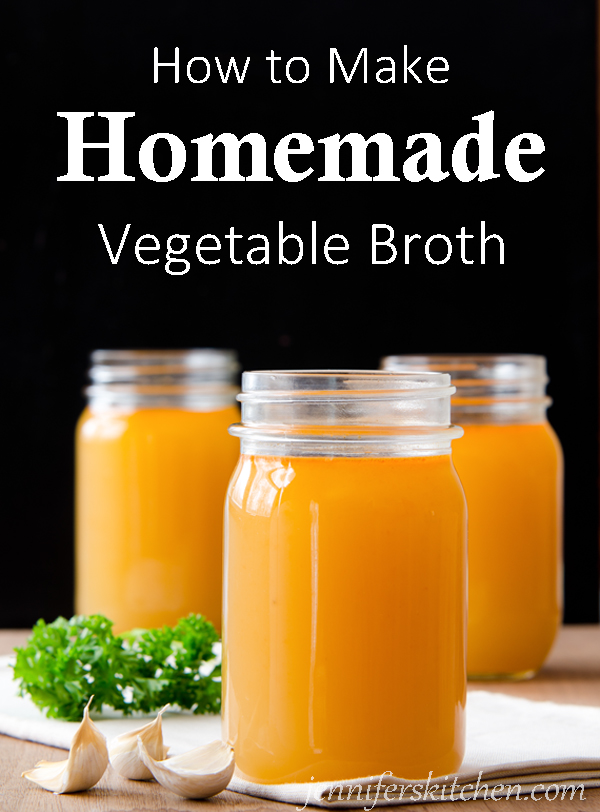
One of the secrets to outstanding soup, flavorful rice, great sauces, and amazing quinoa is starting with a good broth.
Why not just buy broth/stock at the grocery store?
Most of the store-bought versions of vegetable broth or stock don’t taste all that great and are quite expensive for what you get, especially when most stocks, rather than relying solely on fresh vegetables and herbs for their flavor, depend heavily on flavor enhancers, like corn syrup, MSG, natural flavors, salt, sugars, disodium inosinate, and more.
And when you think about it, even if the label lists only vegetables, the likelihood of the company (who makes the broth) using fresh, wholesome ingredients is pretty slim. I imagine a few “bad apples” occasionally slip into the base for the broth. Why not?
In fact, in taste tests done by America’s Test Kitchen, “tasters noted sour, bitter, even ‘rotten’ notes in each of the so-called stocks…”.
A Better Broth
The good news is you can make your own broth or stock at home. It’s super easy, only takes minutes of your time, and allows you to control the ingredients!
Plus, making your own broth is great way to use up extra vegetables from your CSA box or even the vegetable scraps from meal prep, like asparagus stalks, pea pods, winter squash skins, parsley stems, and inner celery leaves.
And, because you can store homemade broth in your freezer (see how-to below), you can make a big batch when it’s convenient, freeze it, and you’ll always have some on hand when you need it.
Broth Recipe
Looking for a step-by-step guide? Check out my broth recipe below.
What ingredients do I use to make homemade vegetable stock/broth?
The vegetables you choose to use in your stock or broth can depend on what you have on hand and how you want it to taste, but there are few basic guidelines to follow for really good-tasting stock/broth.
1. Base Ingredients
While good broth can be made from a variety of ingredients, there are four vegetables that are typically used as a base for good depth of flavor. These are onion, celery, carrot, and garlic.
This website is brought to you without annoying ads because we can better live healthier lives without the influence of marketing. But running a high-traffic site is expensive. How can you help? If you purchase anything through the affiliate links on my site, your cost is the same, but I receive a small commission. Thank you!
2. Herbs
Fresh herbs like parsley, bay leaf, and thyme give your broth a flavor boost. You can also include oregano, dill, and basil in smaller amounts.
Fresh herbs should compose no more than one-fifth of your broth ingredients (not including water), otherwise the flavor can be overpowering. Also, avoid using too many varieties of herbs or the flavors will compete and you’ll have undesirable results.
3. Other Additions
Leeks are a favorite for homemade broth. One reason (besides their great flavor) is that there is so much of the leek that isn’t usable in cooking but is perfect for lending flavor to the broth.
You can also add other vegetables, such as zucchini and other summer squash, asparagus, fennel, chard, parsnips, green beans, bell peppers, and eggplant.
4. Umami
For the best-tasting broth, be sure to include some foods that offer the umami flavor. Umami is one of the five basic tastes: sweet, sour, bitter, salty, and umami.
Some of the foods in which this flavor is found in abundance include sea vegetables (nori, kombu, dulse, etc.) asparagus, sun-ripened tomatoes, soy, mushrooms, matured meat (like beef jerky and cured ham), cheese (especially Parmesan), and seafood. It’s also found in moderate amounts in potatoes, green peas, and Chinese cabbage, and in smaller amounts in other foods.
Since I want a vegan broth and we don’t eat mushrooms, I use tomatoes or 1 teaspoon dulse in my broth. You can also use nori or kombu, both of which have high umami taste. (Potatoes and cabbage don’t make good-tasting broth, so they aren’t good options.) Sea vegetables should be added in the last 20 minutes of simmering.
Can I put ____________ in homemade vegetable stock/broth?
Do you have another vegetable that you’re wondering whether or not to use in your homemade stock or broth? Here’s my A-to-Z List of Vegetables For Broth. It lists which veggies work well in broth and which don’t.
What should not go into homemade vegetable stock or broth?
Artichokes
Artichokes are too strongly flavored to work well in stock or broth.
Brassicas
Foods from the brassica family, such as broccoli, cabbage, Brussels sprouts, cauliflower, kale, rutabagas, and turnips give a strong – somewhat bitter – flavor and can overpower vegetable stock or broth. I recommend you leave them out.
Potatoes
Potatoes tend to absorb flavor rather than adding it. Plus, they can turn the broth/stock cloudy and tend to make the stock spoil faster.
Corn
Corn can also make broth/stock cloudy.
Outer celery leaves
Outer celery leaves are often bitter.
Powdered herbs
Powdered herbs should be avoided as well.
Any veggies that are too old
And, although broth/stock is a great way to use wilted veggies and scraps, be sure to skip any veggies that are rotten or moldy. (You knew that, right?)
Make sure everything you use is clean too–you don’t want to make dirt soup!
For a more comprehensive list, here’s my A to Z list of vegetables to include/exclude in broth.
Using vegetable scraps to make homemade stock or broth
Although I’ve never felt bad about all the peels, stalks, skins, etc. that I threw into the compost pile (my compost is quite happy and that makes me happy!), making veggie scraps into broth before you throw them into the compost pile is a good way to get double use out of them. Simply add your vegetable scraps to a freezer bag or other container that you store in the freezer until you have enough to make broth.
Just be sure that any part of the vegetable you save was washed well. You don’t want any dirt in your broth!
How to make the best vegetable broth
1. Chop vegetables small.
Chopping them small increases the surface area in contact with the water, which maximizes the flavor extracted. Just don’t cut them too small or you’ll have mush before they’re done cooking. One-half inch to one inch is a good size. I sometimes use my food processor to get it done quickly.
2. Sauté.
Lightly brown vegetables by sautéing or roasting. This brings out sweeter, more complex flavors.
3. Add cold water.
Add cold, not warm or hot, water to vegetables. Different flavors are extracted at different temperatures, so starting with cold water and slowly increasing the temperature helps more flavors to be extracted.
4. Turn heat to medium.
Turn heat to medium and slowly bring to just under a boil.
5. Reduce heat.
Reduce heat and keep at a simmer. Try not to allow broth to boil or you’ll lose some of the delicate flavors.
6. Do not stir.
Stirring causes the vegetables to break down and get mushy.
7. Watch cooking time.
Don’t cook for more than 1 1/2 hours. Though you want to simmer it long enough to extract all the wonderful flavors, cooking it too long causes the flavors to deteriorate and the broth becomes bitter.
8. Allow to cool.
Allow broth to cool a bit to avoid getting burned in case some splashing occurs when pouring.
9. Strain.
Strain through a fine mesh strainer, cheese cloth, or a coffee filter. If you want your stock/broth to be very clear and well-strained, you can use a nut milk bag to strain it.
10. Store.
Let broth cool, then pour into storage containers.
How to store broth/stock
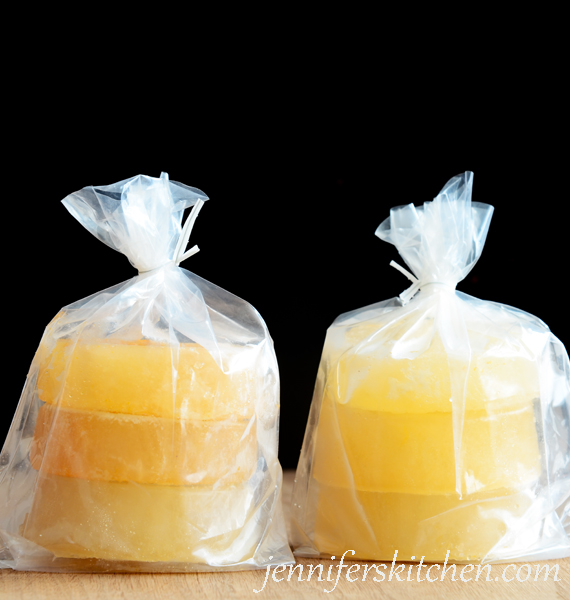
Unless you plan to use your stock or broth in the next day or two, you might want to store it in the freezer. I like to freeze mine in small containers so I can thaw only what I need at the time. Freezing broth in ice cubes trays or muffin tins are two more great options. You can then take the frozen cubes or “muffins” and store them in a freezer bag.
Eight ice cubes equals one cup. Muffin tins come in different sizes.
What can I do with the leftover vegetables when making broth or stock?
If you’re using whole, fresh vegetables and herbs to make your stock/broth, you may be wondering what to do with them when you’re done making stock, rather than throwing them out.
The vegetables will have lost much (but not all) of their flavor and nutrients, so they can’t really be used as you would normally use cooked veggies. But you can use them in small quantities in soup, dips, homemade burgers or patties, or pasta sauce. Because of the flavor loss, you’ll want to be sure the proportion of “stock” vegetables is quite small in relation to the other ingredients.
Or, you can toss them in your compost and use them to grow more yummy vegetables next year!
Please don’t give them to your dog or cat, as onions and garlic (and all members of the onion family) are toxic to these animals. They contain compounds that can damage the animals’ red blood cells.
What is the difference between stock and broth?
The term “broth” refers to a liquid that has been made from simmered meat and/or vegetables, usually strained.
Technically, the term “stock” refers to a liquid that has had bones simmered in it. Meat and/or vegetables are optional, but if there are no bones, it’s not really stock, but rather broth.
When cool, stock is gelatinous because of the collagen that is extracted from the bones during simmering; but broth stays liquid. Stock has a different mouth feel than broth due to the gelatin from the bones. But if the broth is made with more meat than the stock (as it often is), it can be a bit richer than stock in a different way.
What is the difference between vegetable stock and vegetable broth?
Technically, a liquid made from simmered (and strained) vegetables shouldn’t be called stock. After all, it lacks one of the key components of stock – the collagen extracted from bones.
The term “broth” comes from an Old English word which means “to brew” or “a liquid in which something has been boiled”. The “brewing” can be done with both meat and vegetables, with just meat, or with only vegetables. There are several mentions in very old literature of broths made all three ways. So vegetable “stock” is really “broth”.
Got that? 🙂
That said, in modern kitchens, the terms stock and broth are often (incorrectly?) used interchangeably.
Here’s my recipe for flavorful vegetable stock … er … I mean broth.
Do you make homemade stock or broth? What do you like to use stock or broth for?
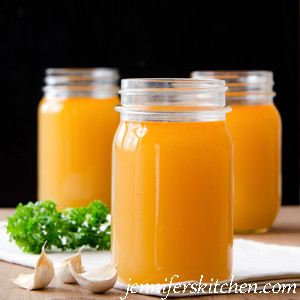
Homemade (Vegan) Stock/Broth
Ingredients
- 2 large yellow onions or sweet onions, diced
- 2 medium carrots, diced or sliced
- 2 ribs celery, sliced or diced
- 2 tablespoons olive oil
- 3 cloves garlic, cut into very small pieces
- 1/2 cup chopped, fresh parsley
- 2 cups clean vegetable scraps - optional
- 1/3 cup canned or fresh diced tomatoes - or 1 tablespoon tomato paste
- 11 – 13 cups cold water
- 1 Turkish bay leaf
- 1 teaspoon dulse - or nori
- 1 sprig fresh thyme
- 1/2 teaspoon salt - or to taste
Instructions
- In a soup pot, sauté onion, carrots, and celery in oil over low to medium heat until onions begin to look translucent. If vegetables are beginning to stick to pan, add more oil or a tablespoon or so of water. Continue cooking until onions begin to brown. Stir often.
- Once onions are lightly browned, add garlic and sauté for 1 additional minute.
- Add remaining ingredients, except dulse or nori, thyme, and salt, and slowly bring to just under the boiling point over medium heat. (Adjust heat depending on your stove. The key is to slowly heat the mixture to ensure optimal flavor extraction from vegetables.)
- Reduce heat and simmer for approximately one hour.
- Add dulse or nori and thyme in the last 20 minutes of simmering.
- Add salt to taste.
- Remove from heat and allow to cool slightly.
- Strain through a fine-mesh strainer or cheesecloth. Keeps in refrigerator for 3 to 4 days or in freezer for several months.
Notes
>> One quick request: if you like this recipe, please leave a rating and a comment. Ratings help more people find these healthy recipes!
Want More?
For more healthy and delicious recipes like this one that will simplify your journey to a healthier and thinner you, check out my
Leave a comment
Your comments make my day! 🙂
You my also like:
Before you go . . .
Did you know that you can eat all this delicious food AND lose weight? You can!
No calorie counting. No portion sizes.
Join my online weight loss program today!

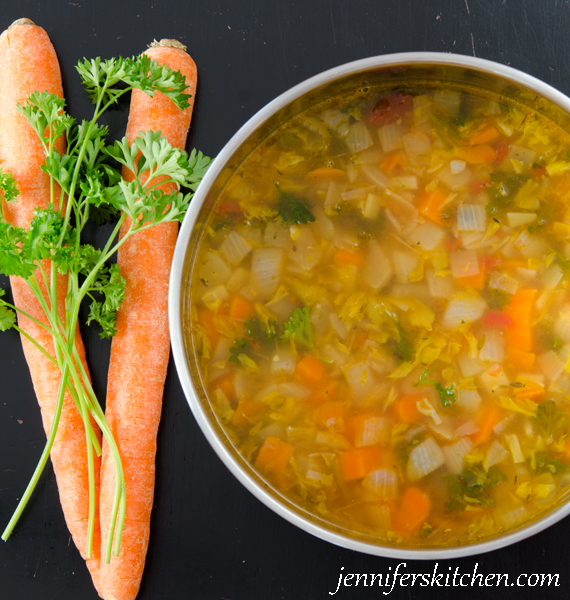
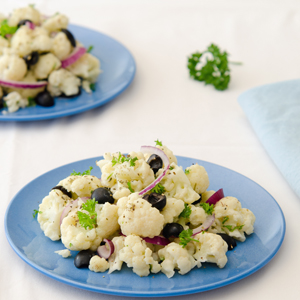

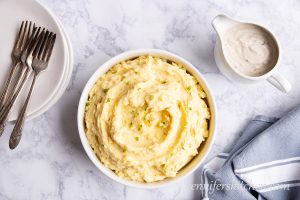

I have lots of uses for this. Thanks!
I am not able to eat tomatoes, even though I love them. Do you recommend omitting them entirely or replacing them? If replacing, what would you use?
Hi Natalie,
You can omit the tomatoes and still have a good stock/broth.
But tomatoes do supply umami flavor, so if you wanted, you could increase other ingredients that offered umami flavor (like nori or asparagus – see list in post) to make up for the lack of tomatoes.
Tomatoes also add a bit of tang, which can easily be compensated for by adding a drop of two of lemon juice to your soup, rice, or whatever your final product that you use the broth in is.
Hope this helps. 🙂
Hi Jennifer,
This stock/broth looks so easy and yummy. I’ve been searching for a soup base for months and haven’t had any luck. I have an onion and garlic intolerance and was wondering what you would suggest I replace them with. I can eat the powdered forms of both, but not the fresh forms. I cannot wait to hear back from you!
Hi Nicolette,
Onions and garlic offer a significant flavor contribution to most broths, so leaving them out will definitely affect the results. However, as a substitute, you can use a combination of fennel, garlic chives, and celeriac in the broth (in addition to the other ingredients) and the end product would have a nice flavor. Not quite the same as with onions and garlic, but good nonetheless.
I’m not sure about adding the powdered forms to the broth, but that may work as well. Let us know if you try it and how it turns out.
Hi Jennifer,
I, and several friends and family, simply detest celery. Considering that we don’t want the flavor of celery in our broth anyway can we just leave it out?
Yes, you could leave it out.
Try parsnip… It’s a crunchy onion/ celery flavor to it and it’s really good in replacement of onions and garlic if you had to
This looks good. I’m going to make it, but I have two questions:
1. Should I peel the onions and garlic?
2. Should the pan be covered when the veggies are simmering?
Thank you. Can’t wait to taste it!
I usually peel my onions and garlic before sauteing them for the broth. But I also add vegetable peels – which sometimes includes onion skins – to my broth after sauteing. I’ve read that garlic peels give broth and off flavor. I’ve never tested this, but I avoid them just in case.
This is the perfect base for a squash or sweet potato soup. I added beets and salad turnips to the mix and it really added a nice flavor. Thank you for sharing this recipe!
Your welcome Julie. 🙂 Mmmm … squash soup sounds really good right now.
Do you know how many calories per cup?
Hi Kathy,
I think the calorie count would be quite low since the base of the broth is vegetables which are naturally low in calories.
I have a post on the subject of calories and nutrition information for recipes here, if you’re interested.
Thanks 🙂
Jennifer
What part of the leek would you recommend?
If you don’t have 2 cups of vegetable scraps would you recommend adding additional fresh vegetables?
Thanks!!
Yes, you absolutely can use additional fresh vegetables.
I use all of the leek – I just make sure it’s washed well since dirt gets trapped in between the leaves.
Hi i was wondering instead of freezing the stock could i can the stock instead?
Hi Darlene. Yes, vegetable broths get canned at 10 pounds of pressure for 35 minutes for quarts (or 30 minutes for pints).
This looks great, I was just wondering according to these directions, about how many cups does this result in?
It makes about 10 cups, but, of course, that will vary some depending on how much of each ingredient you put it. It’s a very flexible recipe.
This looks just like what I need to make my dressing for Thanksgiving. I must be looking in the wrong place, but I can’t find a print button. I keep my recipes in a 3-ring binder and prefer a print-out. Thanks.
It is at the bottom of the recipe. 🙂
Hi Jennifer,
I am making bulk bone broth almost like 10 Litres. Can you tell me How much Kombu to add? Also the bone broth will be simmering for almost 48 hours. When Do I add kombu? Is it ok if add it just the last 4 hours?
Hi Meeri,
I don’t have much experience with bone broths, but from what I know about kombu, it’s best to add it to the broth in the last 20 minutes of simmering otherwise it may make the broth bitter.
In a vegetable broth, I use a small amount (1 teaspoon or so) for 2 to 3 quarts, but I don’t know how that would translate to a bone broth. Sorry I couldn’t be of more help.
Jennifer
Thanks for the quick reply Jennifer. I think I will I a 4 by 4 inch slice of Kombu and try.
Hi Jennifer!
Thanks for this post, it’s very helpful!
The first time I made my own vegetable broth, it came out perfect!
However this last time, I’m not sure what went wrong. It tastes partially bitter. I don’t follow your recipe exactly, I researched how to make it and pulled from a couple different sources, but mostly yours. I’ve looked at your A-Z list of veggies to use and not to use, and I’m not using anything I shouldn’t. I’m mostly using pulp from juicing remains, but I’m careful to separate the pulp I can use before I juice vegetables I can’t use for broth. Do you think the bitter taste is coming from the oil I used to sauté the onions in? I used a store bought mixture of olive and canola oil. Or could it be that I put in to many vegetables for the amount of water?
My main ingredients were carrots and onions and garlic, and I also had 3 bay leaves I put in, and small amounts of tomato, lettuce and carrot. I’m not sure what I’m doing wrong!
Hi Rachel,
Hmmmm … I’ve never made broth with juicing pulp before, so I’m not sure. However, there are a few things that come to mind.
Lettuce can make it bitter and that’s why it’s listed as “no more than 1/10 of ingredients”. I know you said you used a small amount; do you think it was under that amount? Or maybe was your lettuce bitter?
Another thought: onion and especially garlic can become bitter if they are sautéed too quickly or at a high temperature.
Also, did you happen to have beet skins in your pulp? That can make broth bitter.
I hope this helps.
I just wanted to say thank you for responding! I thought for sure I had replied but I think my wifi wasn’t working at the time post it (been having trouble with it). Thanks for your suggestions, I’ve made it again an it’s been great!
Hi!
I love this recipe- it is my go-to. It’s even great omitting celery and tomato, which are allergies of mine! I make this almost every weekend, either to eat or put in the freezer for a quick meal during the week. Thank you, thank you, THANK you!
My only question is this- I use a gas stove, and it usually takes me almost an hour to heat the water to the “just below boiling” point, because I’m so afraid of doing it too quickly! It gives amazing flavor, but at that point, I’m never sure whether to count that as part of the hour and a half for cooking or not.
Any ideas? I’m sure you do it faster, but if you were to do it slowly, would you count that as cook time?
Thanks!
Nikki
Hi Nikki,
I’m so glad you like the recipe and it turns out good for you even without the celery and tomato. Sounds like whatever you’re doing is working great.
I think once the water gets hot, you could start timing it. It doesn’t have to be at the boiling point. The object is for the water to be hot enough to extract the flavors.
Do you cover it at any point?
I don’t cover mine, but I know some people partially (lid on halfway) cover theirs.
Oh my gosh. This recipe is amazing! I think the trick was sauteing the onions before adding the water. It really brought out the flavor.
I separated the broth and the solids to store it, but added the carrots and celery (and some of the onion) back in with chicken and noodles to serve as soup.
Hi Jennifer,
I’m a little late to the game with this one, but I was wondering if you have any suggestions for carrot substitutions (I’m allergic). In most soups and other recipes where it calls for carrot, I substitute sweet potato, but I’m wondering with the concerns about regular potatoes in broths if you think this might be an issue. Maybe you have other ideas? Thank you in advance!!
Hi Emily,
Sweet potatoes make a good substitution for carrots in broth. Use about half the amount of sweet potatoes as you would carrots, and you may want to peel them first – although, peelings are often used in making broth, the peels of sweet potatoes can give it a very earthy taste.
I should also note that the less starchy varieties work much better than the starchy ones.
Happy cooking,
Jennifer
This was amazing and way better than my usual homemade! And we make broth all the time. I normally saute onion, celery and carrots and then garlic and throw that into water with a bay leaf and put on high and bring to boil and then down to simmer for an hour. I think the addition of the other veg in your broth made it better. My guess is that allowing it to slowly come to a simmer and then leaving the top off made the biggest difference. I loved your fantastic explanation of how the flavors come out at different times. It cooked down much more because the top was off and became more concentrated and rich and dare I say “meaty.” We kept tasting the broth after it was at a simmer about every 10 minutes. We decided it was perfect at 37 minutes. Thank you so much for the great technique for broth! We are going to try out other variations for various dishes like lemongrass for Asian dishes or some dill too for the broth. Slow simmer from now on…thanks so much!
Thank you so much Nina! I’m thrilled it turned out so well for you! And thanks for the “37-minutes tip”. Next time I make it, I’m going to keep that in mind.
Great information and I love BOTH the what to use and what not to use (as well as why).
I also appreciate your comments on boxed or canned broths and stocks. Yes, there are a ton of additives and flavor enhancers of all kinds. However, I want to point out that adding the things that you called for Umami flavor is actually adding more natural version of the same toxins that the flavor enhancers use. The reason that kombu adds so much flavor is because it is adding MSG to your food. MSG is derived from kombu actually and the other umami enhancing ingredients you mention (especially soy) have similar effects of adding significant amounts of MSG related neurotoxins. I’d leave that stuff out and enjoy the natural flavors of the vegetables and herbs.
My favorite combination is: Onion, Carrot, Celery, Parsnip, Turnip, Parsley and Dill. Perhaps a hint of garlic.
~Missy
What about vegetables like cauliflower?
Would puréeing the vegetables into the “broth” at the end work? (Taking out bay leaf of course)
Thinking it’d add more flavor as well as fiber to the dish.
Having to cook a strict diet of high fiber, low sodium. High plant protein low animal protein (think over 100g of protein a day) for my uncle with end stage liver disease.
Oh and he’s allergic or won’t eat most fruits and a number of vegetables….. Been fun. I will definitely make a batch of your broth but leave out the salt and much of the celery (due to salt content) Luckily he loves onions though.
Also why no chilis? Like jalapeño or green chili? (I live in southern nm)
Hi Natsha,
Wow, challenging situation you have there. That’s very kind of you.
Vegetables from the brassica family (like cauliflower, broccoli, and cabbage) are usually considered too strong for broth and can impart a bitter flavor.
Since broth is generally a lightly-flavored liquid used as the base for soup and other dishes, strong tasting ingredients (like hot peppers) are also usually avoided. (Actually, I avoid spicy ingredients in all my recipes. You can read more about why that is here.)
By the time the broth is ready, the vegetables have almost no flavor left, so pureeing them into the broth wouldn’t add much in the way of flavor. And most people want their broth to be somewhat translucent. However, if you wanted to make a soup puree – which may work better for your situation since it’s higher in fiber than broth – I would just cook the vegetable a little less and then puree. 🙂
I hope this helps. Best wishes to you.
Jennifer
I was a chef for 16 years I rarely made anything veggie only based, but because of acute pancreatitis for the last two years I’ve been searching for some good vegan and vegetarian recipes, and I think I found a home v in your blog, thank you so much
Hi Brad,
I’m so glad you found my site. A plant-based diet is sure to help. I hope you enjoy : )
Jennifer
Hi Jennifer! Firstly please excuse my lengthy post!! I just started trying to figure out cooking, since my 9mth old daughter started on solids. She’s premature so I decided to start solids a little later. May I ask if your vegetable broth is suitable for infants? I am thinking to use it to cook simple rice porridge. I also plan to go real easy on what I use for the broth as most of the ingredients are not tried before (so far no major allergic reactions to what they have eaten in the last 2 months), and I’m a new cook so lesser might be more managerable for me to try the techniques. I have a few questions please: I’ve not given them onion or garlic before, if I just want to use one yellow onion, do I need to cut back on the suggested quantity for the carrot or celery? I’ll slowly introduce shallots or garlic in future batches of vegetable stock. Carrot and Leek is ok for them. Do I need to sauté Leek as well or just add it in as I pour in the water? So far they have been eating steamed-puree, no oil needed as yet. So I am tiny bit concerned about the olive oil and salt to taste parts mentioned. Can I also cut back on the oil or sauté stated in your recipe, or would it make it bitter? I read you said somewhere in the comments that broth has less fibre content than purée? But broth will still have the vitamins and nutrients of all the veggies used in the cooking, right? Sorry for all the questions, thank you so much!
Hi Fern,
Good for you for being careful in what you feed your little one. It will pay off greatly later. : )
You have some good questions here.
While the vegetable broth is probably “safe” for infants, it is not recommended. Many experts agree that the fewer ingredients at a meal the less likely for babies to develop allergies or digestive issues. This is because the more variety of ingredients in the stomach the more variety of enzymes that are needed to digest those foods and these enzymes can “compete” with each other to some degree which can cause less than ideal digestion.
Because broth is made of several vegetables, it is probably better to go with something less complex for the digestive system.
Giving your baby rice porridge cooked in water instead of broth is a better option. And if you want to feed vegetables, you can just cook the vegetables (one or two at a meal) until soft and feed them that way or puree them (as it sounds like you are already doing). The soft vegetables or vegetable puree will have far more nutrients than the broth.
Also, it isn’t best to feed a baby anything that was browned in oil – just steaming the onions would be better. And it is a good idea to leave salt out of their diet until older.
I hope I’ve answered your questions. If not, just let me know.
Best wishes to you,
Jennifer
Hi.. I make my broth in my Instant Pot. Do you habe any comments, hints, warnings about using a pressure cooker?
Thank you!
Hi Janet,
I’ve never made broth in an Instant Pot / pressure cooker, so I’m not much help there 🙂 I’d love to hear how it works for you.
Jennifer
Grammar note .. Sublect -Verb agreement — In your sentence, “… the likelihood of the company (who makes the broth) using fresh, wholesome ingredients are pretty slim …” the verb “…are…” s/b “…is….” to agree with the singular subject “likelihood”. Just sayin’. It’s the proximity of the word ingredients (pluralized) that threw it off.
Ah, thank you, David. Bad grammar makes me lose my appetite. 🙂 I will fix that.
Hi Jennifer,
I’m excited to try this recipe this weekend! Does this recipe make 10 cups after all the simmering, reducing, etc.? I will be cooking a soup for a large group of people, so it’s important I make enough broth to make my soup.
Also, can I use a Parmesan rind to get the umami flavor (instead of dulse or nori), or will that not provide enough of the flavor?
Thank you for your detailed recipe! It’s the best one I’ve come across.
Hi Ciara,
When I make it, in the end I have about 10 cups; but that amount can vary greatly depending on how much you simmer it and the ingredients you use.
I think Parmesan rind would work for the umami flavor, but I’ve never tried it, so I can’t say for sure. Let us know if you do try it!
Hope your soup turns out fabulous!
Jennifer
Hi, for how many cups of stock is this recipe?
Hi Mary,
When I make it, in the end I have about 10 cups; but, of course, that can vary greatly depending on how much of each ingredient you put it and how long it simmers. It’s a very flexible recipe.
Jennifer
Very helpful information. Thank you. I was doing my own chicken stock and was freezing it but since I became vegetarian I struggle with the soups (which I love). I just wanted to add that we always use almost whole leek, I cut off maybe one inch from the thick top green leaves.
Seems like an excellent recipe for making vegetable broth. I am going to try it over this weekend. Can I drop ‘dulse’ or ‘nori’ from the recipe? Not a big fan of these ingredients. Have you tried adding a small piece of fresh ginger to the broth? I love ginger and I am going to add some to the broth. Also, some of the store bought broths contain tomato paste. Is this a necessary ingredient for making vegetable broth? Appreciate your response on this. Thanks
Hi Rom,
You can leave out the dulse or nori, but they do contribute to the umami flavor, and you don’t really taste them. Tomato paste will also give umami flavor, so it makes a great addition to broth. Neither the sea vegetables nor the tomato are necessary, but the broth will be lacking some in flavor (but it will still be good!) if you don’t include at least one of them.
I’ve never tried ginger.
I hope you enjoy!
Jennifer
Wow these tips and information are so helpful! I’ll be using this recipe as a guide today. I’ve been saving my vegetable scraps for about 2 weeks to make broth so I’m excited to make it today! Thanks so much!
Wonderful! I’m so happy it was helpful. Thank you for your comment.
I made this vegetable broth and it was so fantastic. I make all my own chicken & beef broth, and NEVER buy store bought broth,…except if I need vegetable broth. I’m not thrilled with store bought broth, but with all my attempts to make a delicious, or even “acceptable” veggie broth, I gave up. Then I found THIS post.
I was making Carmelized Onion & Roasted Garlic Soup (which is also delicious!) I found here on Pinterest, but NEEDED Vegetable Broth!
Oh no!! I decided to go back and research vegetable broth recipes on Pinterest.
I’m SO HAPPY I found this post/recipe. I didn’t use asparagus, cuz it was too pricey. Also, no seaweed products. But other than THAT, the greens of the LEEKS were fantastic and so was the BROTH.
SO,…my onion/garlic soup was fantastic BECAUSE of this BROTH RECIPE.
I even sent it to my sister’s who make a lot of soups.
So,…THANK YOU FOR THIS FANTASTUC RECIPE.
I’m a pretty good cook, so when I say something is FANTASTIC,…it IS FANTASTIC!! I will be using this recipe a lot in my future cooking.
Plus the ideas about flavor depth is great for all cooking in general.
So happy here in Austin, Texas!!!
Thank you!!!
That’s what I like to hear! Thank you, Barbara. I am so happy you liked it!! (And now I have a craving for Carmelized Onion & Roasted Garlic Soup! 🙂 )
Hi when would you add the bay leaf. I’m excited this is my first time trying this
Hi Rebecca,
You can add the bay leaf when you add the vegetables.
I hope you enjoy!
Jennifer
Do I need to add extra whole vegetables or can I just use veggie scraps?
Has any one had any success with cooking it in the slow cooker?
Thanks for all the great information you provide in this post I haven’t found any others nearly as great.
Hi Ashley,
You can use only scraps if you’d like. Of course, it will turn out a little different, but if you use scraps from the recommended list of vegetables (link in post), it should still be very good.
Sorry, I’ve never tried this in a slow cooker. Anyone else????
: ) Jennifer
Thanks!
THANK YOU!
Very articulate and in depth.
Appreciate your attention to detail!
I looked on your list an ddid not see Daikon or Jicama???
I was thinking Yes for Daikon as it is a root veggie, but unsure about jicama..
What is your perception?
New Moon Blessings
Hello Banka,
I have never tried either daikon or jicama in broth. My guess is that jicama would not work well as it would release too much starch. Let us know if you experiment with either.
Hi there! I was just wondering what to do with some of my leftover (or unloved by my family ?) CSA veggies so I searched what could go into vegetable broth and I came upon your post. First of all, thank you for the very comprehensive list of what to add/not add. It is very helpful. I used to make chicken bone stock quite often as I tend to buy those delicious rotisseries from Costco and can’t bear the thought of throwing out those yummy roasted bones. So I tend to freeze a few of them along with all my onion peels, and other veggie scraps as the weeks go by. Then I make a giant pot of it. However, I’ve eliminated meat from our diet all but a few times a month so I wanted to make a veggie broth instead. So my question is, can I sauté all the scraps I have frozen so I can benefit from the deep browning flavor that lends to it? Should I do it before I freeze or do you think it’s possible to defrost them all and sauté right before making the broth? Thanks for your input!
Hi there! I was just wondering what to do with some of my leftover (or unloved by my family ?) CSA veggies so I searched what could go into vegetable broth and I came upon your post. First of all, thank you for the very comprehensive list of what to add/not add. It is very helpful. I used to make chicken bone stock quite often as I tend to buy those delicious rotisseries from Costco and can’t bear the thought of throwing out those yummy roasted bones. So I tend to freeze a few of them along with all my onion peels, and other veggie scraps as the weeks go by. Then I make a giant pot of it. However, I’ve eliminated meat from our diet all but a few times a month so I wanted to make a veggie broth instead. So my question is, can I sauté all the scraps I have frozen so I can benefit from the deep browning flavor that lends to it? Should I do it before I freeze or do you think it’s possible to defrost them all and sauté right before making the broth? Thanks for your input!
Hi there, JeAnn. I’m so happy the post was useful to you.
I generally only saute the vegetables that I have listed in the actual broth recipe because I don’t really like the flavor when I saute the other veggies. But you may like it.
If you do, I strongly recommend sauteing before freezing. It’s very challenging to get a good saute after veggies have been frozen. (They’re too watery).
Good for you for reducing meat consumption; I hope you find lots of recipes that you like on my site!
Jennifer
Love this recipe. So easy and delicious. Thank you for sharing ?
You’re welcome, Anna. 🙂 🙂
Great info, very well written.
Thanks Jennifer, I used to make stocks in my meat-eating days but haven’t done a veg one yet. How far does the water cover the vegetables when you start?
Hi Dirk,
It depends on the size and shape of pan, but it usually covers it by about 1 1/2 to 2 inches.
Thank you so much for this post Jennifer! I am currently reading a cookbook on how to prepare soups and stocks but was halted by some holes in the instructions. Thank you for being so thorough in your explanation as to the ‘why’s’ in which to prepare. In doing so you create chefs – understanding the reasoning behind the instruction allows room for self creation instead of ignorant direction which only breeds one-hit wonders. Thank you again 🙂
Aw, thank you, Samantha for the terrific comment. I’m really happy the post was helpful.
Thank you for all of your info! I come back to site often when making veggie stock/broth! I do have a question the the “great all knowing” Google couldn’t answer. Can you use beans? Like pinto, black or kidneys? I have a couple batches of pinto bean soaking water that I don’t want to trash. Can that water (or beans) be part of this recipie?
That’s something I’ve actually wondered about as well, Erin; but I’ve never tried it. Beans tend to make the broth too starchy. Not sure about the soaking water though.
Sorry, I’m not any more helpful than the great google 😉
This is my second time making this. Excellent broth! Will be pressure canning it in pt. jars
What a great idea to pressure can it. Thank you for your comment, Debra ?
Your other page with the A-Z list of vegetables that can or can’t be used in stock is such a great resource, thank you. I’ve consulted it about 100 times to see if I can save something for my freezer stock bag. Thank you!
Awesome, S J! I’m really happy it comes in handy. Thank you for taking the time to comment.
Thanks for such an informative recipe. How do you account for such a bright yellow color to this stock? Mine never comes out this color.
What about adding cloves?
Hi Candace,
I have never tried cloves, so I don’t know how that would turn out.
Wow wat een duidelijke en leerzame info die ik echt
nergens kon vinden.
I’m thankful it was helpful to you 🙂
Hey Jennifer, I was hoping you could elaborate more on your choice to not consume mushrooms. I could understand just not enjoying them, but to say that you’re plant based is a bit misleading; your recipe calls for salt, which is a mineral! I think many of us are wondering the logic behind the lines you’ve drawn!
Hi Bre,
You can find an answer to your question by following the “mushroom link” in the post. 🙂
Happy cooking,
Jennifer